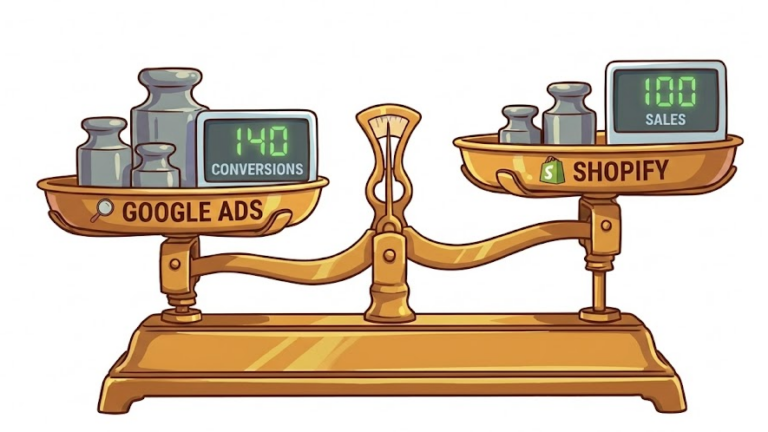“What if I build the team wrong and it sets us back 12 months?”
That’s a question that e-commerce founders and decision-makers worry about a lot more than they’d care to admit.
I’ve analyzed dozens of companies that successfully navigated this transition from $5M to $15M+ revenue.
Here’s the framework that worked, including the specific decision trees these teams used and the expensive mistakes they avoided (and made).
But first, you need to know if you’re actually at the inflection point where team structure has become your bottleneck.
TLDR
| Current Pain Point | Immediate Action Needed |
| Paid campaigns plateau despite budget increases | Restructure: Hire Performance Marketing Manager |
| Creative output bottlenecked, brand inconsistency | Add: Creative Lead + standardized processes |
| Founder/CMO buried in coordination, not strategy | Promote: Existing generalist to Head of Marketing |
| Retention flat, customer data insights missing | Hire: CRM/Email Manager + Marketing Analyst |
| Multiple product lines, unclear messaging | Implement: Weekly growth stand-ups + role clarity |
Three Team Evolution Stages:
- Scrappy generalist team (under $3M revenue)
- Core + key specialists ($3-10M revenue) ← You are here
- Structured pods ($10M+ revenue)
How to Scale in 90 Days:
- Map your bottlenecks using the assessment in Section 1
- Hire or upskill for 1–2 high-leverage roles based on Section 3 decision tree
- Establish one weekly ritual + one performance dashboard from Section 7
Now, let’s get into the specifics…
How To Know If You’re Ready To Scale
Most team structure choices are made based on gut feeling or what worked for someone else’s business.
That’s a great recipe for expensive mistakes.
Here are the hard numbers that indicate you’ve outgrown your current marketing team:
Critical Threshold Metrics
| Metric Category | Threshold | What It Means |
| Paid Media Spend | >$100K/month with flat ROAS | Your current team can’t optimize at scale |
| Customer Database | >50,000 active buyers, retention flat/declining | You’re missing retention opportunities |
| Product Complexity | >200 SKUs or 3+ distinct categories | Generalist approach can’t handle segmentation |
| Leadership Time | >30% spent on coordination vs. strategy | Team structure is creating overhead, not leverage |
| Single Points of Failure | >2 critical functions depend on one person | You’re one resignation away from major problems |
| Cross-Channel Coordination | Multiple product lines feel impossible to coordinate | Complexity has outgrown current structure |
Quick Assessment Tool
Score yourself 0-2 points for each threshold you’ve crossed:
- 0-2 points: You’re probably still in the generalist phase
- 4-6 points: You’re ready for specialist roles
- 8+ points: You’re overdue for restructuring (and likely feeling the pain)
I’ve seen companies ignore these signals for months, thinking they can “make it work” with their current team.
It leads to burned-out teams, stagnant growth, and competitors who moved faster eating their lunch.
Generic Team Advice Fails at Your Scale
A lot of the advice on building marketing teams is either written for startups with less than $1M in revenue, or enterprises doing $50M+.
In the messy middle, the rules are different.
The Reality of the $5-10M Inflection Point
At your revenue level, you face a unique set of constraints:
- Too complex for startup advice: “Just hire a marketing generalist” doesn’t work when you’re running 15+ campaigns across 6 channels
- Too small for enterprise playbooks: You can’t afford the 12-person marketing department that every “scaling” guide assumes
- Resource constraints meet complexity demands: You need specialist-level execution with generalist-level budgets
Common Reasons For Failure
Most companies at your stage make one of these mistakes:
- They hire a VP of Marketing who expects a team of 8 direct reports, then gets frustrated managing freelancers and wearing multiple hats.
- They try to hire specialists for every function and end up with junior people who can’t actually solve the complex problems.
- They keep asking their “marketing manager” to handle everything from paid ads to PR, wondering why nothing scales properly.
The solution isn’t to copy what bigger companies do or stick with what got you here.
It’s to build a team structure that matches your specific stage of growth.
Related: Should You Hire a Fractional CMO? A Decision Framework for $5M+ E-commerce Brands
How To Evolve Your Team In 18-Months
Forget generic org charts. Your next hire should be based on where your biggest bottleneck is right now. Here’s how to figure that out:
Start Here: Decision Tree for Your Next Hire
The Resulting 7-Seat Structure
Based on analyzing dozens of successful $5-10M brands, here’s the team structure that consistently works:
| Role | Key Responsibility | When to Hire | Typical Salary Range |
| Head of Marketing | Strategy, prioritization, team coordination | Promote existing generalist or hire when team hits 3+ people | $120-180K |
| Performance Marketing Manager | Paid ads optimization, budget allocation, testing | When ad spend >$50K/month | $80-120K |
| CRM/Email Marketing Manager | Retention campaigns, lifecycle automation, segmentation | When customer database >25K | $70-100K |
| Creative Lead/Designer | Brand consistency, ad creative, campaign assets | When outsourcing creative costs >$60K/year | $65-95K |
| Marketing Analyst | Attribution, reporting, performance insights | When making decisions on <statistically significant data | $75-110K |
| Content/SEO Manager | Organic traffic, content strategy, SEO optimization | When paid CAC becomes unsustainable | $65-90K |
What Stays Outsourced (For Now)
- CRO/Landing page development (until conversion becomes the primary bottleneck)
- Video production (until content volume demands it)
- Advanced development work (until technical requirements justify it)
- PR/Communications (until brand awareness becomes a key growth lever)
This isn’t a “hire everyone at once” situation. Most successful companies I work with add 1-2 roles every 6 months, following the decision tree above.
Related: How to Manage a Digital Marketing Agency
General Rules of Thumb For Budget & Headcount
Let’s talk numbers. Here’s what actually works for companies at your revenue level:
| Budget Category | Percentage of Gross Revenue | Dollar Range (for $7M business) |
| Total Team Cost | 8-12% (excluding ad spend) | $560K – $840K annually |
| Marketing Headcount Ratio | 1 FTE per $1M-$1.5M revenue | 3-7 people for $7M business |
Can’t Afford the Full Team Yet?
I get it. The math above might make you nervous.
Here’s how to prioritize when budget is tight:
How To Prioritize If Your Budget Constrained
| If You Can Only Afford… | Hire This Role First | Outsource These Functions |
| 2 FTEs | Head of Marketing + Performance Manager | Creative, Content, Analytics |
| 3 FTEs | Above + Creative Lead | Content, Analytics, Advanced CRM |
| 4 FTEs | Above + CRM Manager | Content, Advanced Analytics |
| 5+ FTEs | Above + Analyst, then Content Manager | Advanced development, PR |
For functions you can’t afford full-time yet:
- Creative: Fractional Creative Director (20 hours/week) + freelance designers
- Analytics: Fractional analyst (15 hours/week) for strategy + automated reporting
- Content: Contract content strategist + freelance writers
The key is to get strategic oversight from experienced people, even if you can’t afford them full-time.
What to In-House vs. Outsource
This is where most companies waste time and money, and get mired in complexity they could have avoided.
Here’s how to make smart decisions:
| Function Type | In-House When… | Outsource When… |
| Strategy-Critical | Customer strategy, channel prioritization | Never (these define your competitive advantage) |
| Brand-Sensitive | Creative direction, email campaigns, content strategy | Quality/consistency issues arise |
| Technical/Specialized | Core analytics, performance optimization | High volume, repetitive execution needed |
| High-Volume Execution | Daily campaign management, customer segmentation | Ongoing, predictable workload |
Bring a function in-house when:
- Outsourcing costs > 70% of a full-time salary
- You’re spending >4 hours/week managing vendors for that function
- Quality requires >2 revision rounds per project
- Strategic decisions are delayed by vendor availability
Transition Trigger Metrics
| Function | In-House Trigger | Warning Signs You’ve Waited Too Long |
| Creative | >$60K/year on agencies + 48+ hour revision cycles | Brand inconsistency, missed launch dates |
| Performance Marketing | >$50K/month ad spend with flat ROAS | Can’t test fast enough, losing auction efficiency |
| Content | >$40K/year on agencies + SEO traffic plateau | Messaging doesn’t match brand voice, content gaps |
| Analytics | Making budget decisions on incomplete data | Wasted ad spend, can’t identify what’s working |
Managing the Transitions From Generalist to Specialist Teams
The transition from generalist to specialist teams can come with a lot of stumbling blocks.
People get territorial, processes break down, and productivity temporarily drops.
Related: The 2025 B2B CMO Playbook: Surviving Budget Cuts, AI Disruption & Privacy Laws
Here’s how you sidestep those issues.
Month 1: Identify Your “Promotable Generalist”
Your current marketing generalist probably isn’t going anywhere. The question is: what’s their superpower?
- Strong at strategy and coordination → Future Head of Marketing
- Excels at paid channels → Future Performance Marketing Manager
- Creative eye and brand sense → Future Creative Lead
- Data-driven and analytical → Future Marketing Analyst
Month 2: Define New Responsibilities
Create clear role definitions before you hire anyone new:
| Old Role | New Responsibilities | What They Stop Doing |
| Marketing Manager → Head of Marketing | Strategy, budget allocation, team coordination, executive reporting | Day-to-day campaign execution, content creation |
| Marketing Generalist → Specialist | Deep focus on 1-2 channels/functions, training new hires | Trying to do everything, being the backup for every function |
Month 3 – 6: Gradual Transition
Don’t change everything at once. Here’s the timeline that works:
- Week 1-2: New hire shadows existing team, learns processes
- Week 3-4: Joint ownership of key functions
- Week 5-8: New hire takes ownership, existing team provides backup
- Week 9-12: Full transition, process documentation updated
Common Scenarios You Might Find Yourself In
Scenario 1: Your Marketing Manager Becomes Head of Marketing
What changes:
- They stop doing day-to-day execution
- New focus: weekly strategy sessions, monthly budget reviews, quarterly planning
- They become the bridge between marketing and executive team
- Compensation typically increases 20-30%
Scenario 2: Splitting Responsibilities Without Losing Knowledge
The risk: Your generalist knows where all the bodies are buried. The solution:
- Document everything before you hire (campaigns, passwords, vendor relationships)
- Create knowledge transfer sessions between old and new roles
- Keep your generalist involved in strategic decisions for their former areas
But remember – when you hire specialists above generalists, expect some friction:
- Your generalist might feel demoted (even if you promote them too)
- New specialists might dismiss existing processes
- Decision-making can slow down as people figure out who owns what
Solutions:
- Clearly communicate the “why” behind changes to the whole team
- Give your existing team members new titles and responsibilities, not just new bosses
- Set expectations that productivity might dip for 30-60 days (and that’s normal)
Processes That Make Small Teams Act Big
Your new team structure won’t work without the right processes. Here’s what actually moves the needle:
Cross-Training Coverage Map
| Critical Function | Primary Owner | Backup Person |
| Paid Search Management | Performance Manager | Head of Marketing |
| Email Campaign Setup | CRM Manager | Creative Lead |
| Creative Asset Creation | Creative Lead | Freelancer Pool |
| Performance Reporting | Marketing Analyst | Performance Manager |
Team Structure KPIs
Most companies only track marketing performance (ROAS, conversion rates, etc.). But you also need to track how well your team structure is working:
| Team Health Metric | Target | How to Measure |
| Decision Speed | <48 hours for tactical decisions | Track time from question to decision |
| Campaign Launch Time | <7 days from brief to live | Average time from brief approval to launch |
| Cross-Training Coverage | 100% of critical functions have backup | Monthly audit of coverage map |
| Meeting Efficiency | <20% of time in meetings | Weekly time tracking |
| Revision Cycles | <1.5 average per project | Track revision requests per campaign/creative |
You don’t need to invest in expensive tech or software to measure all this – a look at your communication tools and calendars will tell you how your team is doing on most of these metrics.
“Structural Health” Dashboard
Create a simple scorecard that tracks:
- Green: Team is functioning well, processes are smooth
- Yellow: Some friction, but manageable
- Red: Major structural issues, need immediate attention
When you see red, that’s your signal to revisit structure, not just performance.
Future-Proofing Your 2025 Team Structure
The marketing landscape is changing fast. Your team structure needs to account for what’s coming, not just what worked last year.
AI Impact on Marketing Roles in E-commerce
| Traditional Role | 2025+ Evolution | New Skills Needed |
| Creative Lead | Creative Director + AI Operations | Prompt engineering, AI tool selection, quality control at scale |
| Content Manager | Content Strategist + AI Editor | AI content direction, brand voice training, output optimization |
| Marketing Analyst | Growth Analyst + AI Data Scientist | Predictive modeling, AI tool integration, automated insights |
| Performance Manager | Growth Engineer + AI Optimizer | Automated testing, AI bid management, performance prediction |
Don’t hire people who are afraid of AI.
Hire folks who are excited to use AI to do their jobs better.
Privacy/Tracking Changes
The death of third-party cookies and iOS tracking changes used to be just technical problems. Now they’re organizational ones.
Here are the key points to keep in mind:
- You need someone who can set up and interpret incrementality testing
- MMM (Marketing Mix Modeling) is now a core competency, not an advanced one
- Email and CRM are more important than before.
- Customer data platforms need hands-on management.
- Creative testing needs to happen faster (since tracking is less precise)
- Channel diversification becomes essential (can’t rely on Facebook/Google attribution)
- Server-side tracking and conversions APIs become table stakes
Prepare your team.
- Audit current skills: Who on your team is already adapting to these changes?
- Plan training budgets: Allocate 5-10% of payroll to upskilling existing team members
- Hire for adaptability: Look for people who’ve successfully navigated major platform changes before
Warning Signs If Your Structure Isn’t Working
Even with perfect planning, team structures can break down. Here’s how to spot problems early and fix them:
| Warning Sign | What It Means | Immediate Action Needed |
| Same bottlenecks recurring after 90+ days | Process problem, not people problem | Audit workflows, not performance |
| New hires not improving key metrics within 6 months | Wrong hire or unclear expectations | Performance review + role clarity |
| Increasing coordination overhead | Team structure creating friction | Simplify reporting, reduce meetings |
| Team members regularly working outside defined roles | Role definitions unclear or unrealistic | Redefine responsibilities |
| Decisions taking longer than before | Too many cooks, unclear authority | Clarify decision-making authority |
When to Reorganize vs. When to Add Headcount
Reorganize when:
- Process problems: Work is getting stuck in handoffs
- Unclear accountability: Multiple people think they own the same thing
- Skill misalignment: Right people, wrong seats
Add headcount when:
- Clear capacity constraints: Team is executing well but can’t handle volume
- Proven ROI on existing roles: Current team members are driving clear business value
- New strategic priorities: Expanding into channels/functions that require dedicated focus
Do both when:
- Major strategy shifts: New product lines, market expansion, business model changes
- New channel expansion: Adding channels that require both new skills and capacity
- Acquisition integration: Bringing in new customers/products that change your marketing needs
Common Restructuring Scenarios
Scenario 1: The “Promotion Path” Problem
You hired a Performance Marketing Manager, but now they want to be promoted to Head of Performance Marketing. Problem: you’re not big enough for that role yet.
Solutions:
- Expand their scope (add channel ownership)
- Create “senior” title with special projects
- Discuss timeline for when that promotion makes sense
Scenario 2: The “Specialist vs. Generalist” Tension
Your Creative Lead wants to focus only on strategy, but you need them to do production work too.
Solutions:
- Hire junior designer to handle production
- Outsource routine creative work
- Redefine role expectations clearly
Scenario 3: The “Too Many Chiefs” Problem
You’ve promoted/hired several managers, but now you have management overhead without execution capacity.
Solutions:
- Combine similar roles temporarily
- Add individual contributors under managers
- Revert some management roles to senior IC roles
The Operator-to-Architect Shift
The execution mindset that got you to $5-10M makes this team-building process feel wrong.
You’re wired to fix problems by doing more work yourself, but scaling requires stepping back to design systems that work without your constant involvement.
Most operators resist this shift. It feels like abandoning what made you successful.
The breakthrough companies recognize they’re applying their instincts at a higher level – instead of optimizing campaigns, they’re optimizing how campaigns get optimized.
If you’d rather focus on building those systems while someone else handles the execution, we’re happy to walk through your specific situation on a discovery call.
No agenda, just a conversation about what makes sense for your business.






no replies